14 Most Common Types of Butterflies in Indiana (With Pictures)
-
Pete Ortiz
- Last updated:
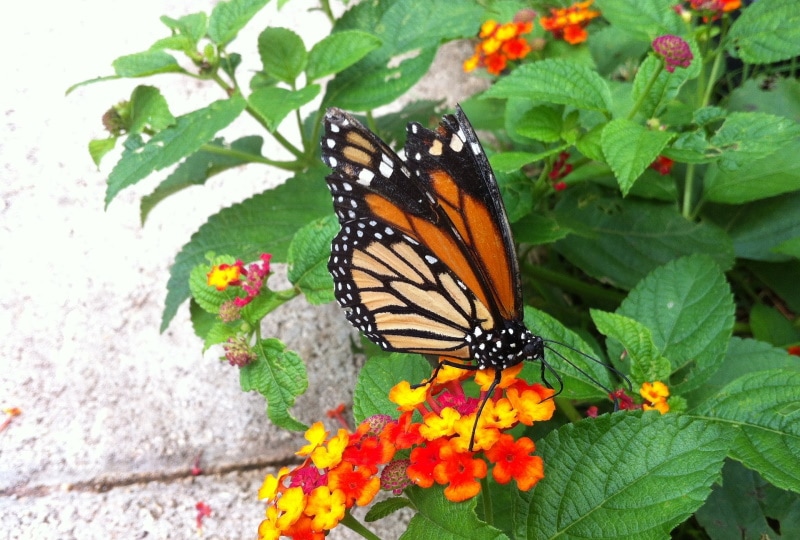
The state of Indiana boasts a vast ecological diversity. It has over 150 different butterfly species, more than most states in the US. This is mainly due to the bogs, lakes, marshes, and grasslands in the regions that provide a natural habitat and food source for this wide variety of butterflies.
Although Indiana does not have a state butterfly, it has several butterflies that are native to the state and cannot be found anywhere else in the world. Most butterflies, however, have very similar colorations, and it can be difficult to tell them apart.
The 14 Types of Butterflies in Indiana
The most common types of butterflies in Indiana include:
1. Painted Lady
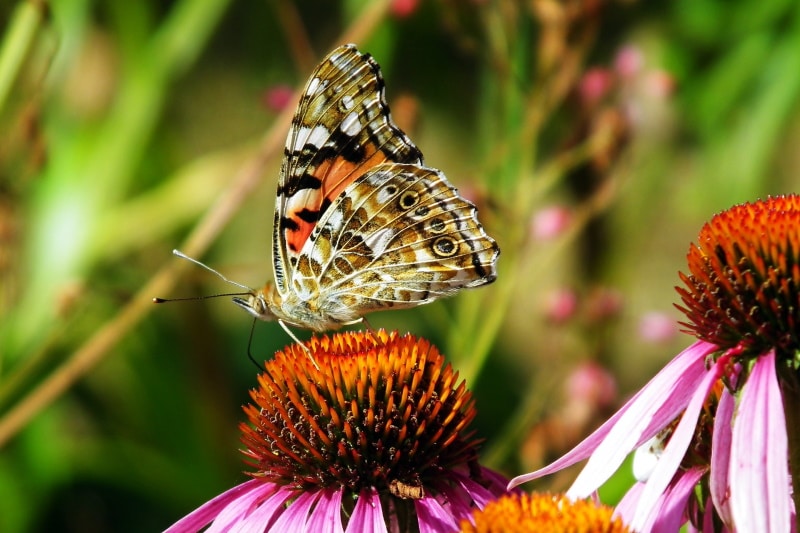
| Color | Pinkish-orange coloring with dark brown markings near the wingtips; white spots within the black markings |
| Size | A wingspan of 1.75 to 2.5 inches |
| Habitat | Quiet and undisturbed areas |
The painted lady migrates during the winter from Mexico to Indiana and returns during the spring and summer months. Like most butterflies, it’s quite shy and will avoid humans and human dwellings, which makes it pretty hard to observe at close range.
These butterflies are the only species that mate throughout the year, and their populations can vary yearly. It’s common for them to go for years without being spotted in Indiana to suddenly show up in large numbers. Their caterpillars have a greenish-yellow color and are found burrowing into the ground.
2. American Lady
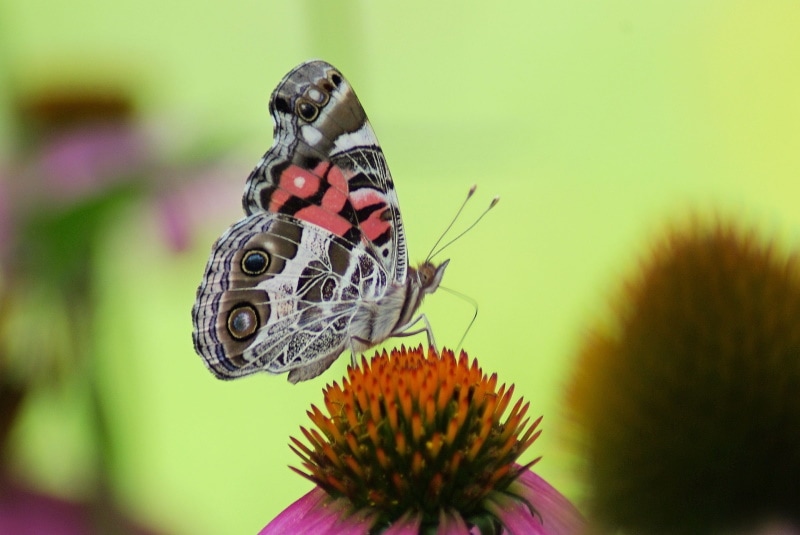
| Color | Bright orange with dark borders on the wings and white and purple spots |
| Size | A wingspan of 1.75 to 2.5 inches |
| Habitat | Open landscapes with leafy flowering plants |
The American lady has eyespots on the underside of their wings, which they use to intimidate predators and ward off any potential danger in their surroundings. Their eyespots are also their most identifiable feature.
These butterflies are nervous and prefer quiet and calm habitats; they will take flight at the slightest disturbance. They also feed on nectar from flowers and rotting fruits.
3. Viceroy Butterfly

| Color | Deep orange coloring with black edges and veins and white spots on the black border on the wings |
| Size | A wingspan of 2.5 to 3.25 inches |
| Habitat | Leafy flowering plants |
The easiest way to identify a viceroy butterfly is by the black lining on the bottom wing; this is only present in viceroy butterflies. These butterflies don’t migrate. Instead, they roll up and hibernate in the leaves of plants and only emerge during the mating season. The caterpillars are greenish-brown and spiny.
4. Hackberry Emperor
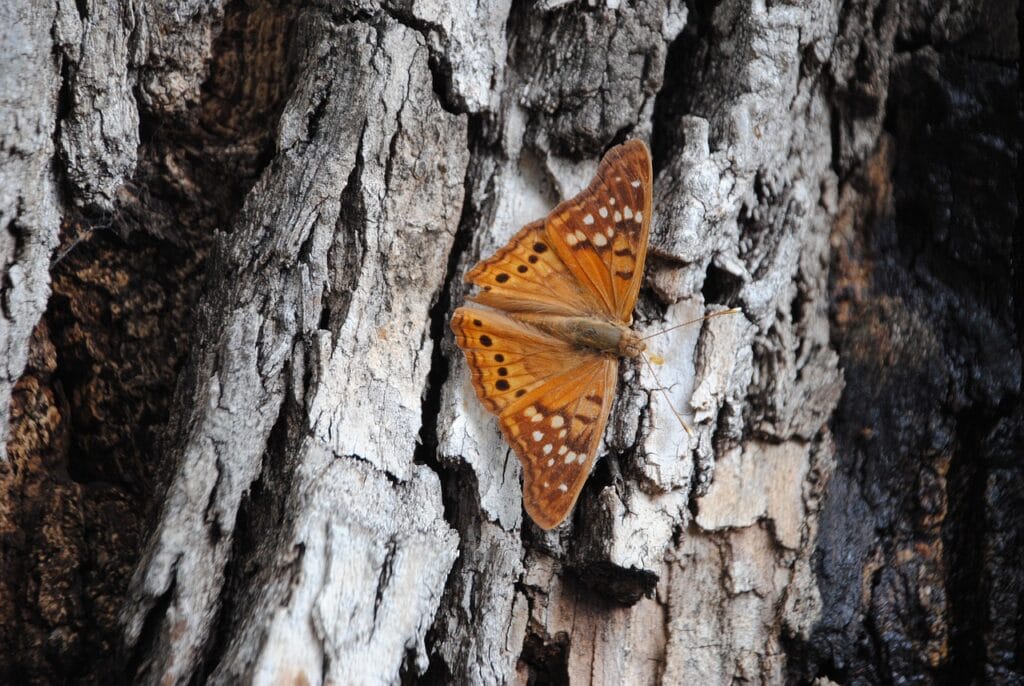
| Color | Amber brown intricate pattern with orange eyespots and dark brown and white spots |
| Size | A wingspan of 2 to 2.75 inches |
| Habitat | Moist wooded areas |
Hackberry emperor butterflies are pretty common in Indiana. They are mostly found in parks and suburban yards. However, you are unlikely to find them on flowers since they don’t eat nectar; instead, they feed on sap from rotten fruits and plants.
Unlike most butterflies, the hackberry emperor is naturally curious and is not shy of humans. Sometimes they land on humans who happen to be in their habitat; this is because they need sodium to survive, which can be found in rocks, soil, and even on human skin!
5. Common Buckeye

| Color | Brown with orange bars with black and white rings and three to four prominent eyespots |
| Size | A wingspan of 2 to 2.5 inches |
| Habitat | Open spaces |
The common buckeye migrates to Indiana during the summer and returns to the northern states in spring to breed. These butterflies can produce more than two generations per mating season. Caterpillars have the same coloring as the adult butterfly; dark brown coloring with stripes along the back and sides.
Although they are naturally shy and don’t approach anything they view as a predator, they fly low and often perch long enough for you to identify them and take a photo.
6. Variegated Fritillary
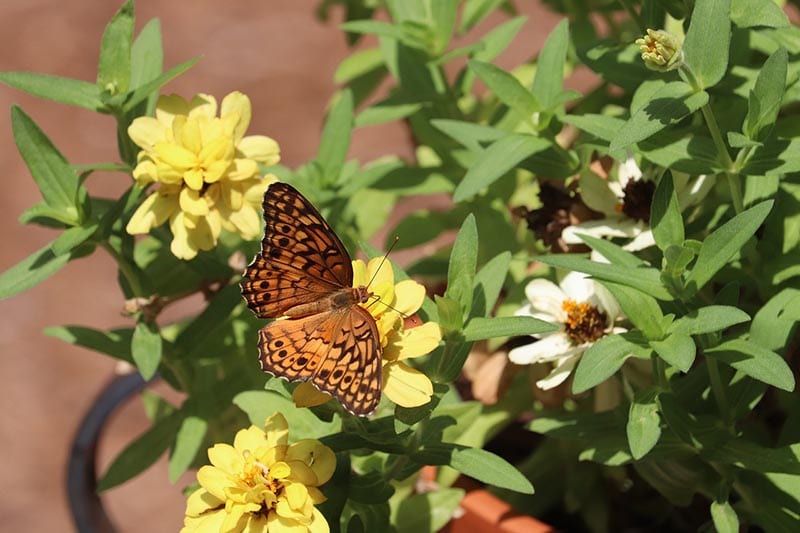
| Color | Tawny brown coloring to burnt orange with black dots and lines |
| Size | A wingspan of 1.75 to 2.25 inches |
| Habitat | Meadows and open lots |
Variegated fritillary loves eating nectar from plants such as butterfly weed, mint, and violets. You can attract them to your yard or garden by planting colorful plants such as pansies, passion flowers, and daisies.
The variegated fritillary is one of the most beautiful butterflies in Indiana. Their caterpillars are unique in that they have a hard shell that allows them to transform into adult butterflies while avoiding predators. The white shell has shiny gold spikes that make it look like a pendant.
7. Great Spangled Fritillary
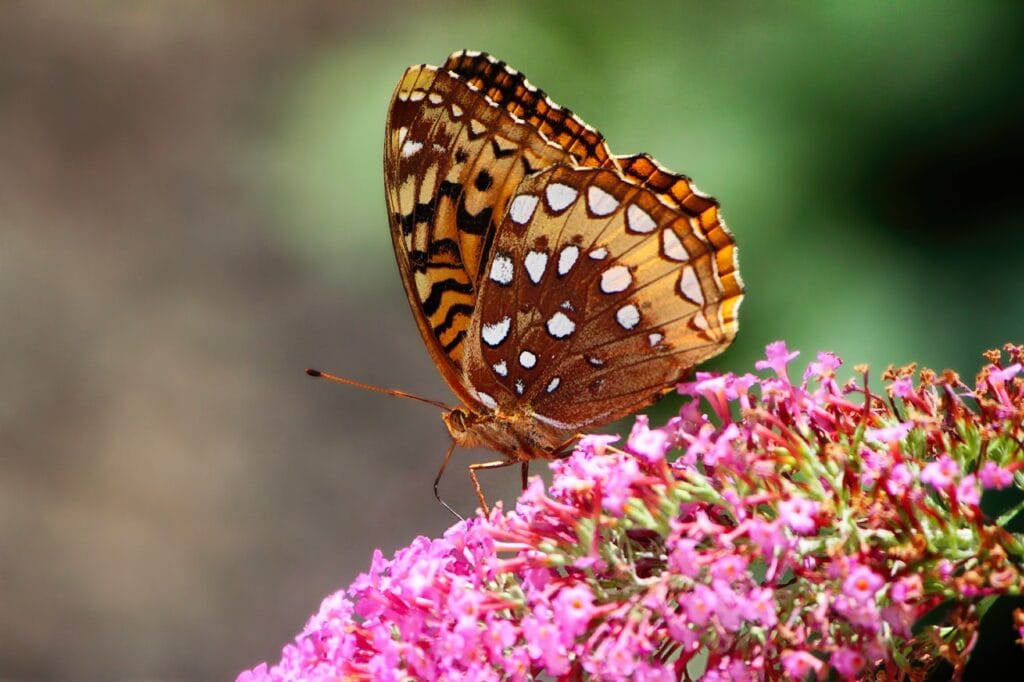
| Color | Orange with black lines and dots |
| Size | A wingspan of 2.5 to 3.5 inches |
| Habitat | Open, sunny areas |
The great spangled fritillary is one of the many butterfly species in Indiana that prefers open areas. It does not do well in dark and moist environments. Unlike most butterflies, this species does not migrate and can be found in Indiana throughout the year. Instead, they hibernate during the winter in logs and emerge during spring to mate.
Another interesting fact about this butterfly is that the males die immediately after mating. The females live for another two to three weeks, feeding and laying eggs before dying.
8. Aphrodite Fritillary

| Color | Bright yellow-orange with black webbing and dots |
| Size | A wingspan of 2 to 3 inches |
| Habitat | Meadows, fields, and pastures |
Adult aphrodite fritillary butterflies lay their eggs on violets, where the caterpillars crawl to hibernate after hatching. The butterflies are attracted to other bright flowers in the garden, mostly those that produce nectar. If you want to attract these butterflies to your garden or yard, try planting milkweed, butterfly weed, and thistles.
9. Red Admiral
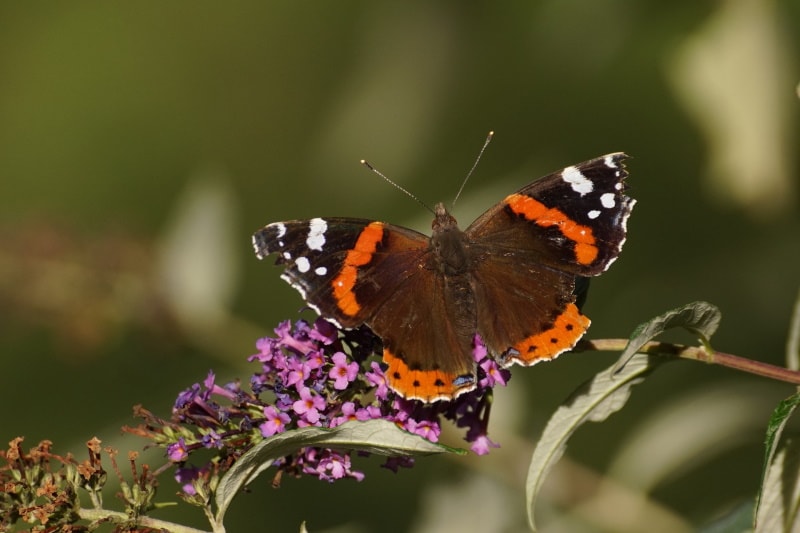
| Color | Dark brown with a reddish circular band and white spots |
| Size | A wingspan of 1.75 to 2.5 inches |
| Habitat | Moist habitats |
Red admirals are migratory; they fly to the south during summer and then move north again when it’s spring. If you want to observe these butterflies in close range, you are lucky; they are very calm, easy to approach, and frequently land on people.
The red admiral differs from most butterfly species because they prefer to feed on fermented fruit instead of nectar from flowers. Therefore placing pieces of fruit in your yard instead of planting flowers attracts this butterfly.
10. Monarch
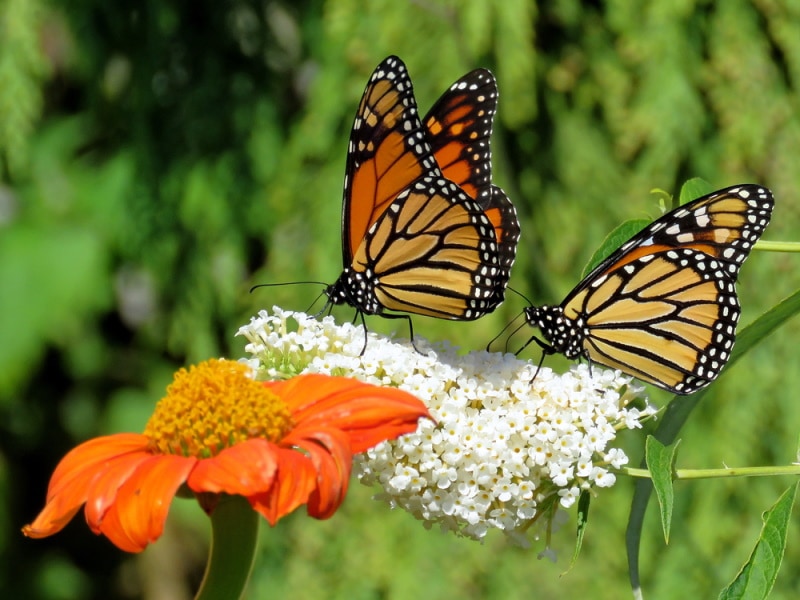
| Color | Dark brown with a reddish circular band and white spots |
| Size | A wingspan of 3.5 to 4 inches |
| Habitat | On milkweed plants |
Monarchs are the easiest butterflies to identify in Indiana. They are popular due to their unique and bright color and migration patterns. During September, you are likely to witness huge groups flying south. You can find them in Indiana during summer and spring near milkweed plants, their only food source.
11. Red-Spotted Purple

| Color | Iridescent black-blue hue with rows of white spots on the outer edge of the wing |
| Size | A wingspan of 3 to 4 inches |
| Habitat | Moist, warm habitats |
Red-spotted purple butterflies developed their coloring to mimic poisonous insects and months to deter predators. You will likely see the red-spotted purple butterfly from April to October, which is their mating season. The eggs hatch into molten brown, cream caterpillars with twig-like horns that feed on grass.
Like the red admiral, this butterfly feeds on sap and rotting fruit. If you want to attract them, try placing cut pieces of banana in your yard.
12. White Admiral
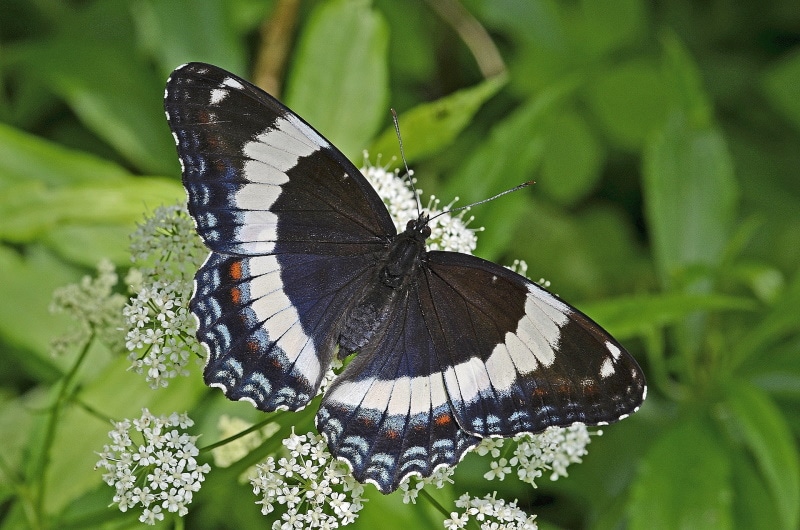
| Color | Black with a bright white band at the center of the upper wings |
| Size | A wingspan of 3 to 4 inches |
| Habitat | Forests and woodlands |
The white admiral has the same migration patterns as the red-spotted purple butterfly. You can find them between the months of April–October, which is also their mating season. Some butterflies in this species can also mimic poisonous insects to deter predators. However, the species is widespread and white admirals with the original coloring are still present.
13. Pearl Crescent

| Color | Bright orange with black borders, spots, and lines |
| Size | A wingspan of 1.25 to 1.75 inches |
| Habitat | Moist ground |
The pearl crescent is one of the smallest butterflies in Indiana. It’s, therefore, very hard to spot and identify. They prefer open and sunny habitats such as forest edges and meadows since they feed on rotting leaves and plants.
However, they are attracted to flowering plants, especially the aster plant. Their caterpillars feed on the nectar from this flower during their development stage.
14. Eastern Comma
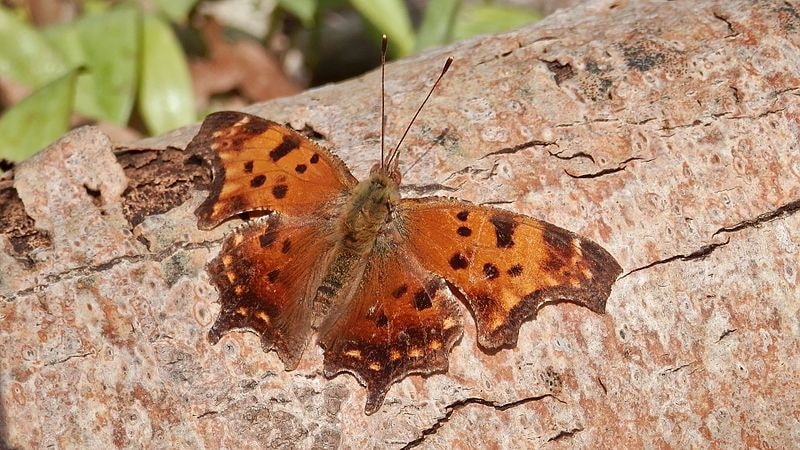
| Color | Orange coloring with black mottling on the upper wings and some orange spots on the lower wings |
| Size | A wingspan of 2 to 2.5 inches |
| Habitat | Deciduous forests, yards, and parks |
The Eastern comma butterfly prefers to patch on nettle and elm trees, where they lay their eggs and molt from caterpillars. Adults do not feed on nectar from flowers; you have a better chance of attracting them by leaving out fruits and carrion in your yard.
They are prevalent in Indiana, and your chances of spotting one are high. Interestingly, adult butterflies don’t hibernate during winter and are active throughout the year.
What Are Butterflies Most Attracted To?
Most butterflies feed on nectar and are attracted to flowering plants with big, bright petals. If you want to attract more butterflies to your yard or garden, consider planting more flowers and adding bird baths in your yard.
Butterflies also need a suitable place to lay their eggs and food for the larvae and caterpillars. Therefore, ensure that you plant glass in your yard and place pieces of fruit in the yard. Some other things you can do to make your garden a butterfly garden include:
1. Planting Sweet Nectar Sources in the Sun
Flowers that produce nectar should receive full sun from morning to evening because butterflies only feed in the sun. If the sun does not reach your butterfly garden, try planting nectar sources in the vegetable garden.
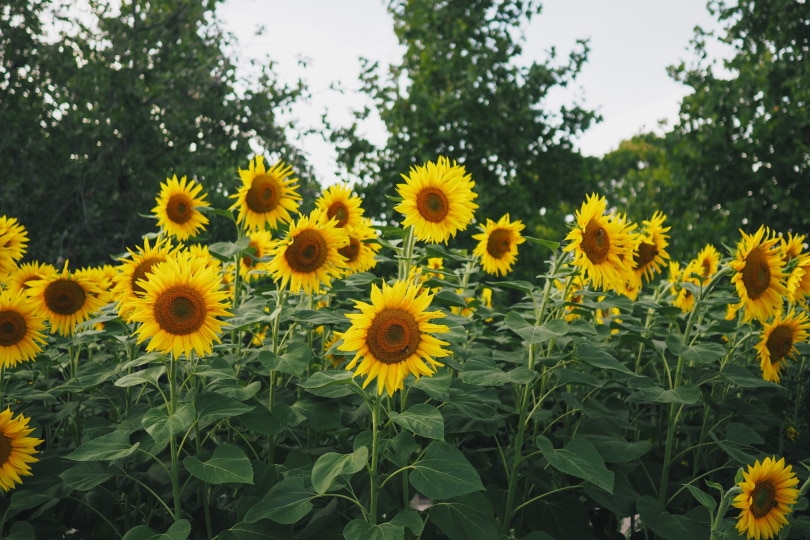
2. Planting for Continuous Gloom
If you aim to attract butterflies in your garden, consider planting plants that bloom throughout the year. Butterflies need nectar throughout their entire lifespan.
3. Avoid Using Insecticides
Most insecticides contain chemicals such as diazinon and pyrethrum, which can affect the normal functioning of butterflies and can even kill them. Avoid using these insecticides anywhere in your compound and instead opt for organic methods.
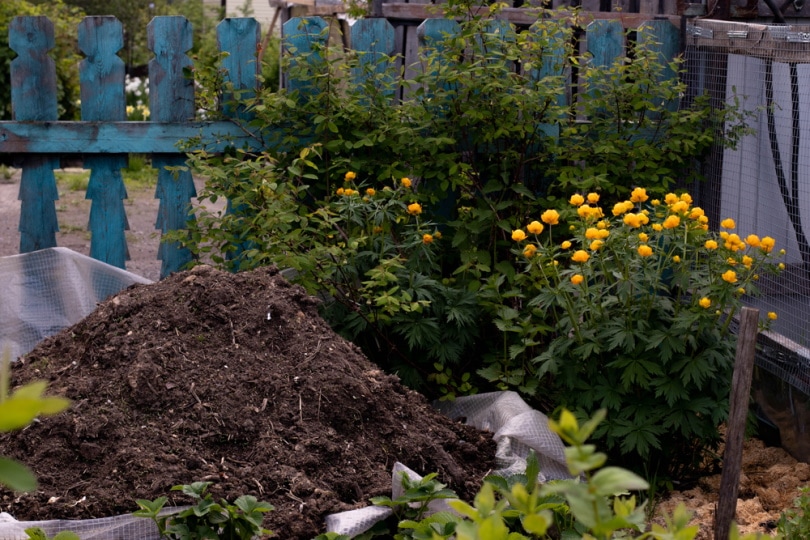
4. Provide a Place for Them to Rest
Butterflies need the sun to arm their wings for flight; they also get tired after flying around for a long time. Consider placing some flat stones in your garden under the sun where they can rest and bask.
5. Feed the Caterpillars
If you don’t take care of the caterpillars, you won’t have adult butterflies. You can feed the caterpillars by bringing them food and increasing native plants in the garden.

How to Maintain Butterfly Populations in Indiana
The number of butterflies in Indiana has declined rapidly in recent decades. Between 1977 and 2018, the numbers dropped an average of 1.6%. The factors that have led to the decline include habitat loss, chemical pollution, and climate change. Fortunately, all these factors can be remedied; butterflies also reproduce easily, making it easier to reverse the population decline.
Featured Image Credit: soymilk, Pixabay
Contents



